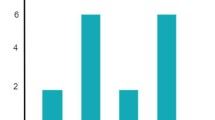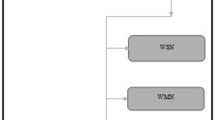Abstract
C-V2X (Cellular Vehicle-to-Everything) standard introduced in 3GPP Release-14 is emerging as a potential technology for Cooperative Awareness Message (CAMs) dissemination among connected vehicles. But to attain its full potential, optimal resource scheduling and interference management must be enforced. To address this issue, we propose a weighted exponential averaging based Context-Aware Resource Reselection scheme (CARRs), enabling the periodic exchange of CAMs in a vehicular network. The proposed strategy allows autonomous resource selection by performing continuous power sensing and cooperative learning with the neighbors within the safety zone. CARRs is a two-stage learning process. In the first stage, it learns the exponential weighing factor for each resource available in the Vehicle-to-Vehicle resource pool and performs resource reselection. In the second stage, it learns to select transmit power level based on the interference experienced over the reselected resource. It is established through numerical results that CARRs outperforms the existing strategies. Packet reception ratio, average error rate, average blocking rate and update delay are considered as the performance metrics. CARRs improves packet reception ratio by 3.1% while reducing the average error rate by 28.2% and lowering update delay by 4.5% in comparison to existing schemes.






Similar content being viewed by others
References
Lyu, F., Cheng, N., Zhu, H., Zhou, H., Xu, W., et al. (2018). Intelligent context-aware communication paradigm design for IoVs based on data analytics. IEEE Network, 32(6), 74–82.
Zhang, Y., Zhang, H., Long, K., Zheng, Q., & Xie, X. (2018). Software-defined and fog-computing-based next generation vehicular networks. IEEE Communications Magazine, 56(9), 34–41.
Sharma, S., & Singh, B. (2019). Cooperative reinforcement learning based adaptive resource allocation in V2V communication. In International Conference on Signal Processing and Integrated Networks (SPIN) (pp. 489–494). IEEE.
Bonjorn, N., Foukalas, F., & Pop, P. (2018). Enhanced 5G V2X services using sidelink device-to-device communications. In 17th annual mediterranean ad hoc networking workshop (Med-Hoc-Net) (pp. 1–7). IEEE.
Fritzsche, R., & Festag, A. (2018). Location-based scheduling for cellular V2V systems in highway scenarios. In IEEE 87th vehicular technology conference (VTC Spring) (pp. 1–5). IEEE.
Kuruvatti, N. P., Klein, A., Ji, L., Zhou, C., Bulakci, O., et al. (2015). Robustness of location based D2D resource allocation against positioning errors. In 81st vehicular technology conference (VTC Spring) (pp. 1–6). IEEE.
Zhang, X., Shang, Y., Li, X., & Fang, J. (2016). Research on overlay D2D resource scheduling algorithms for V2V broadcast service. In 84th vehicular technology conference (VTC-Fall) (pp. 1–5). IEEE.
Sun, W., Ström, E.G., Brännström, F., Sui, Y., & Sou, K. C. (2014). D2D-based V2V communications with latency and reliability constraints. In Globecom Workshops (GC Wkshps) (pp. 1414–1419). IEEE.
Sharma, S., & Singh, B. (2019). Weighted cooperative reinforcement learning-based energy-efficient autonomous resource selection strategy for underlay D2D communication. IET Communications, 13(14), 2078–2087.
Sharma, S., & Singh, B. (2019). Coalition game-based strategy for resource allocation and transmit power control in D2D communication. National Academy Science Letters. https://doi.org/10.1007/s40009-019-00846-6.
3GPP. TSG RAN WG1 #83. R1-160236 Final report of 3GPP TSG RAN WG1 #83 v1.0.0, 2015.
3GPP TSG RAN WG1 R1-163032. Details of sensing for V2V. Qualcomm Incorporated, Busan Korea, 2016.
3GPP TSG RAN WG1 R1-160432. Sensing based collision avoidance schemes for V2V communication. Intel Corporation, 2016.
Yang, J., Pelletier, B., & Champagne, B. (2016). Enhanced autonomous resource selection for LTE-based V2V communication. In Vehicular Networking Conference (VNC) (pp. 1–6). IEEE.
3GPP TS36.213; Technical Specification Group Radio Access Network. Evolved Universal Terrestial Radio Access (E-UTRA); Physical Layer Procedures, V15.0.0, 2017.
Abanto-Leon, L. F., Koppelaar, A., & de Groot, S. H. (2018). Enhanced C-V2X Mode-4 Subchannel Selection. In 88th vehicular technology conference (pp. 1–5). IEEE.
Cheng, X., Yang, L., & Shen, X. (2015). D2D for intelligent transportation systems: A feasibility study. IEEE Transactions on Intelligent Transportation Systems, 16(4), 1784–1793.
Tseng, Y. L. (2015). LTE-advanced enhancement for vehicular communication. IEEE Wireless Communications, 22(6), 4–7.
Piro, G., Orsino, A., Campolo, C., Araniti, G., Boggia, G., & Molinaro, A. (2015). D2D in LTE vehicular networking: System model and upper bound performance. In 7th international congress on ultra modern telecommunications and control systems and workshops (ICUMT) (pp. 281–286). IEEE.
Liu, Y., Zhang, H., Long, K., Nallanathan, A., & Leung, V. C. (2019). Energy-efficient subchannel matching and power allocation in NOMA autonomous driving vehicular networks. IEEE Wireless Communications, 26(4), 88–93.
Calvo, J. A. L., & Mathar, R. (2017). An optimal LTE-V2I-based cooperative communication scheme for vehicular networks. In 28th Annual International Symposium on Personal, Indoor, and Mobile Radio Communications (PIMRC) (pp. 1–6). IEEE.
Sahin, T., Khalili, R., Boban, M., & Wolisz, A . (2018). Reinforcement learning scheduler for vehicle-to-vehicle communications outside coverage. In Vehicular networking conference (VNC) (pp. 1–8). IEEE.
Zhang, H., Feng, M., Long, K., Karagiannidis, G. K., & Nallanathan, A. (2019). Artificial intelligence-based resource allocation in ultradense networks: Applying event-triggered Q-learning algorithms. IEEE Vehicular Technology Magazine, 14(4), 56–63.
3GPP R1-1608562, Final report of 3GPP TSG RAN WG1 #86, V1.0.0, 2016.
Cecchini, G., Bazzi, A., Masini, B. M., & Zanella, A. (2017). LTEV2Vsim: An LTE-V2V simulator for the investigation of resource allocation for cooperative awareness. In 5th international conference on models and technologies for intelligent transportation systems (MT-ITS) (pp. 80–85). IEEE.
Molina-Masegosa, R., & Gozalvez, J. (2017). System level evaluation of LTE-V2V mode 4 communications and its distributed scheduling. In 85th vehicular technology conference (VTC Spring) (pp. 1–5). IEEE.
Bazzi, A., Cecchini, G., Zanella, A., & Masini, B. M. (2018). Study of the impact of PHY and MAC parameters in 3GPP C-V2V Mode 4. IEEE Access, 6, 71685–71698.
Mughal, D. M., Kim, J. S., Lee, H., & Chung, M. Y. (2019). Performance analysis of V2V communications: A novel scheduling assignment and data transmission scheme. IEEE Transactions on Vehicular Technology, 68(7), 7045–7056.
Bazzi, A., Zanella, A., & Masini, B. M. (2019). Optimizing the resource allocation of periodic messages with different sizes in LTE-V2V. IEEE Access, 7, 43820–43830.
He, J., Tang, Z., Fan, Z., & Zhang, J. (2018). Enhanced collision avoidance for distributed LTE vehicle to vehicle broadcast communications. IEEE Communications Letters, 22(3), 630–633.
Ren, Y., Liu, F., Liu, Z., Wang, C., & Ji, Y. (2015). Power control in D2D-based vehicular communication networks. IEEE Transactions on Vehicular Technology, 64(12), 5547–5562.
Haider, A., & Hwang, S. H. (2019). Adaptive transmit power control algorithm for sensing-based semi-persistent scheduling in C-V2X mode 4 communication electronics. Electronics, 8(8), 846.
3GPP TS 36.213 v10. 6.0. Evolved universal terrestrial radio access (E-UTRA); physical layer procedures (Release 10), 2012.
TS 36.331 V15.3.0 3rd Generation Partnership Project. Technical Specification Group Radio Access Network; Evolved Universal Terrestial Radio Access (E-UTRA); Radio Resource Control (RRC); Protocol Specification. Release 15, 2018.
Sutton, R. S., & Barto, A. G. (1998). Reinforcement learning: An introduction. Cambridge, MA: MIT Press.
Author information
Authors and Affiliations
Corresponding author
Additional information
Publisher's Note
Springer Nature remains neutral with regard to jurisdictional claims in published maps and institutional affiliations.
Rights and permissions
About this article
Cite this article
Sharma, S., Singh, B. Context aware autonomous resource selection and Q-learning based power control strategy for enhanced cooperative awareness in LTE-V2V communication. Wireless Netw 26, 4045–4060 (2020). https://doi.org/10.1007/s11276-020-02310-6
Published:
Issue Date:
DOI: https://doi.org/10.1007/s11276-020-02310-6




